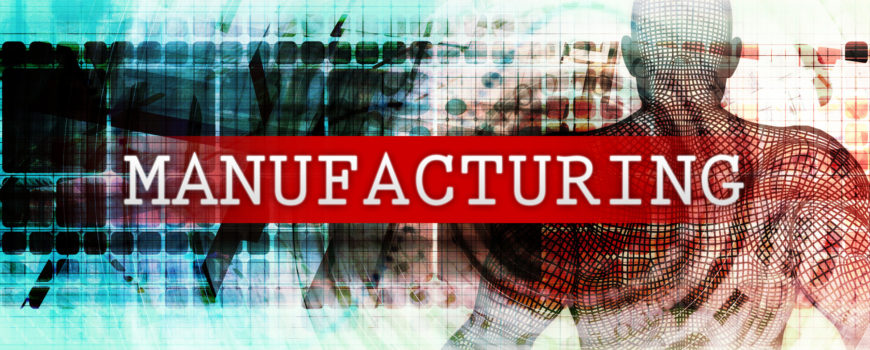Denver Manufacturing has seen a number of different technological upgrades for the past few years, and the industry has no other choice but to upgrade with the times. This year, there are some manufacturing trends that the industry should pay attention to.
Blockchain Technology
Not a lot of people had heard of blockchain outside of the cryptocurrency sphere until recently, and now blockchain is changing the manufacturing world. Blockchain technology helps distribute information to thousands of different computers in order to reduce the threat of hacking one central point of entry. Blockchain will have an effect on financial operations by adding additional security and boosting speed, and it will be a cost effective solution for transactions. Blockchain technology will also play a role in areas of transaction reporting, tracking, and management. Fully secure product tracking can also benefit from blockchain technology.
More Diversity
Last year many different industries experienced conversations about diversity, and the manufacturing industry is no expectation. An organization is likely to perform better if the workforce is more diverse. Businesses that are forward thinking should be implementing more rigorous and impactful programs to help accelerate the diversification of the workplace.
IoT Expansion
2018 was already a big year for IoT expansion and 2019 is expected to be the same. The Internet of Things (IoT) is a network that connects many devices, from cars to home appliances. The idea behind this technology is to automate information and data transfers between different programs and devices without having to use human-to-human interaction, or even human-to-computer interaction. With the boost of 5G connectivity and other advances in sensor technology, the industry is expected to see a lot more IoT devices than ever before, which will drive an industrial revolution. The manufacturing industry benefits from IoT because it can help you with the ability to automatically track and log. Transferring data this way saves money and time and you don’t have to manually track all that information. While this may not be such a big deal for small businesses, as IoT becomes more widely used it means companies that are using older technology may need to adjust. If companies cannot adapt, business partners will switch to partners that move faster and have a better eye for innovation. Another benefit of IoT for the manufacturing industry is better responsiveness and efficiency. A machine could respond to problems faster and provides instant and timely solutions. This allows for bad products to not be produced in the first place.
5G Rollout
The groundwork has been laid for 5G for a bit now, and in 2019 the rollout should really pick up. 5G will help improve download speeds, reduce latency issues, and enhance the ability to control a variety of devices remotely. 5G rollout also helps improve IoT and will be a game changer that gives real time control and insight to companies, in order to make more impactful decisions.
Augmented Reality
Many people have seen augmented reality but may not have realized this is what it was. It’s the act of imposing digitally created images into real life objects within a device, such as a camera, computer, tablet, or cell phone. This may seem like it is not going to help manufacturers, but it does. Even though robots do their own work, they can’t yet fix themselves. By using software in a phone or tablet, workers can use video footage in real time and let the software fix the problem. This works if the software is on the outside of the machine. Another way augmented reality can be used in the industry is with training. Many people know that manufacturing jobs can be dangerous. If a worker isn’t sure of what they are doing, he or she can injure themselves and others. With training sessions using augmented reality, employees can get the knowledge they need to know without even stepping foot on the floor of the factory and risk hurting themselves. All they have to do is use a headset, look on a screen and enter a manufacturing simulator. Some other applications for augmented reality that aren’t as known are for inventory management. Programs can show workers where materials and parts are in the warehouse, as well as assist with product development. Augmented reality can allow you to create something before it even hits the line.
Customer Support with Many Channels
Manufacturing offers a lot of sales work and customer service, and it’s important that this part of the industry doesn’t get ignored. Omni channels means more channels and finding multiple ways to complete the same tasks. By using Omni channels, you can allow business partners and vendors to buy their own materials and parts and you don’t need to spend a lot of time with emails, calls, and other back and forth communication.
Robotics
2019 will see a greater use of robots. Robots are going to be more sophisticated and machines are going to be smarter, smaller, and more integrated with human tasks. There is a lot of concern about robots taking over jobs. According to one review, robots are expected to create some new jobs over the next few years due to artificial intelligence and automation. However, jobs could also be lost. As the industry continues to move toward robotics, the process is moving toward people working near the machines or even with the machine. Robots can be utilized in a number of different ways, such as discovering sources of raw material and inspecting equipment for safety, that make them valuable to have in the industry. Tag Team Manufacturing in Colorado invested in a Sawyer Robot to help with the long production work of small parts. Sawyer can run 24-7 with lights out capabilities and can be trained to do various tasks that are needed in the machine shop.
Analytics Software
With improvements in big data, analytics help businesses go from being reactive to proactive. Businesses can now get ahead and employ predictive analytics, in order to anticipate what is coming. By using predictive analytics, businesses can use a holistic approach to optimizing production assets across the entire lifecycle to improve operations. A machine shop shouldn’t just simply collect and store data, and manufacturers need to be able to identify the results they want to achieve and use the data to actually help them with their goals. An example can be an original equipment manufacturer wanting to improve the facility by reducing the amount of materials that are wasted during production. In order to do this, manufacturers need to collect production data and compare it with data from enterprise resource planning. Without a strategy, businesses will just collect data and keep it, and then not receive any benefit from their investment in analytics software.
3D Printing
3D printing is not anything new and has been around for a while, but it will continue to help manufacturing in the new year. 3D printing can help make manufacturing stronger, faster, better, and cheaper, and also help the industry benefit overall.





